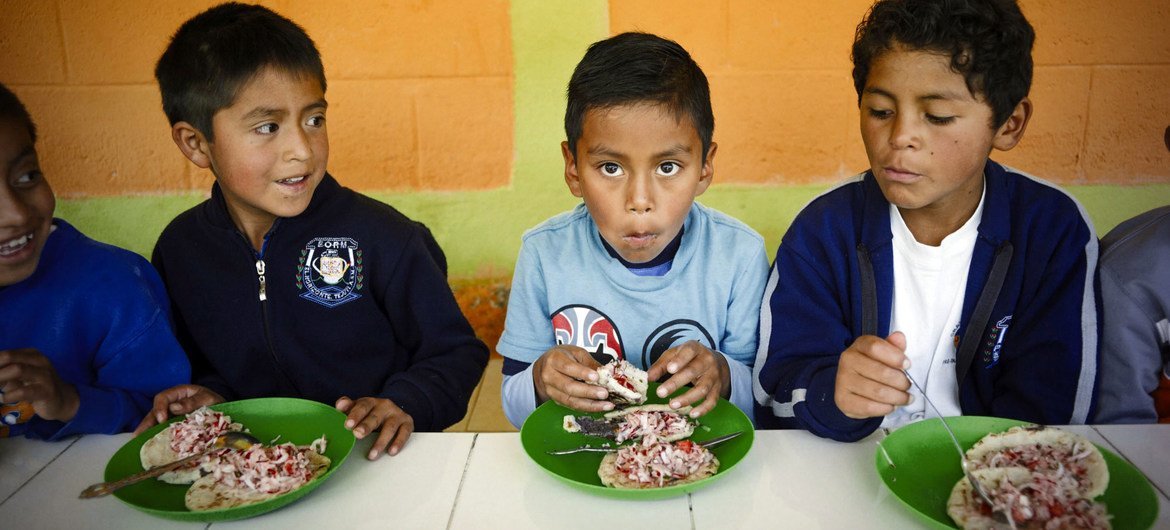The Food and Agriculture Organization of the United Nations (FAO) published this Wednesday some data that reminds us that, although the world has made progress in supplying enough calories to feed the world population, there is still a long way to go to sustainably feed everyone, everywhere.
Latin America and the Caribbean is the region where a healthy diet has the highest costwith $3.89 per person per day in 2020, followed by Asia ($3.72), Africa ($3.46), North America and Europe ($3.19), and Oceania ($3.07) , highlighted the FAO study, prepared with critical contributions from researchers from the Tufts University and the world Bank.
The UN agency recently conducted an extensive analysis about how many people can access a healthy diet that offers a diversity of foods rich in nutrients, in line with dietary guidelines. The results revealed that almost 3.1 billion people could not afford a healthy diet in 2020which represents 112 million more people than in 2019.
Of the 112 million more people who could not afford a healthy diet compared to 2019, 78 are in Asia, 25 in Africa, eight in Latin America and the Caribbean and North America, and one million live in Europe. In twelve countries, all of them in Africa, more than 90% of the population cannot access a healthy diet on a regular basis.
“Ending hunger, food insecurity and malnutrition in all its forms (including undernutrition, micronutrient deficiencies, overweight and obesity) is about more than getting enough food to survive: what people eat must also be nutritious“, said the director of the Division of Agri-Food Economics at FAO, David Laborde. “However, a key obstacle is the high cost of nutritious food and the low affordability of healthy diets for large numbers of people around the world “.
Some children eat their lunch at a school in Guatemala.
Data available to everyone
“Tracking the cost and affordability of healthy diets is a step forward in recognizing the need to nourish and not just feed the world,” said FAO Director of Food and Nutrition Lynnette Neufeld. The indicators “also provide us with the starting point for generate locally relevant evidence to guide policies and programs to make healthy diets affordable for all people, at all times,” he added.
The set of indicators is now available for your query and download in the agency data center. FAOSTAT is the world’s largest data platform for food and agriculture, with nearly 20,000 indicators covering more than 245 countries and territories.
Computing, monitoring and reporting of global, regional and national indicators on the cost and affordability of a healthy diet (CoAHD) is now institutionalized and will be regularly updated by FAO. This provides a new and reliable benchmark for monitoring global progress towards achieving affordable healthy food for all.
The indicators are based on an integrated set of data, calculated from variables such as retail prices of locally available food and dietary guidelines based on food, the patterns of household income distribution of the countries and the formulas necessary to establish purchasing power parities.
“Systematically measuring and monitoring the cost and affordability of healthy diets and moving to ensure their affordability is of paramount importance and is urgently needed. FAO has stepped up and taken on this task,” said the Division director. of Statistics of the FAO, José Rosero Moncayo.
Future perspectives
The FAO CoAHD project is part of a broader set of activities that will contribute to achieving one of its four objectives within its strategic framework 2022-2031: better nutrition.
This initiative is part of the agency’s commitment to generate evidence to advise countries on their food and nutrition policies. FAO encourages its members and all stakeholders to scale up the counting and reporting of these indicators to the subnational level, thus contributing to the search for more tailored policies and programs to have greater impact on the ground.
The next report on The state of food security and nutrition in the world It will be published in July 2023.


![[Img #74664]](https://thelatestnews.world/wp-content/uploads/2024/12/James-Watson-The-controversial-genius-behind-the-double-helix-150x150.jpg)








